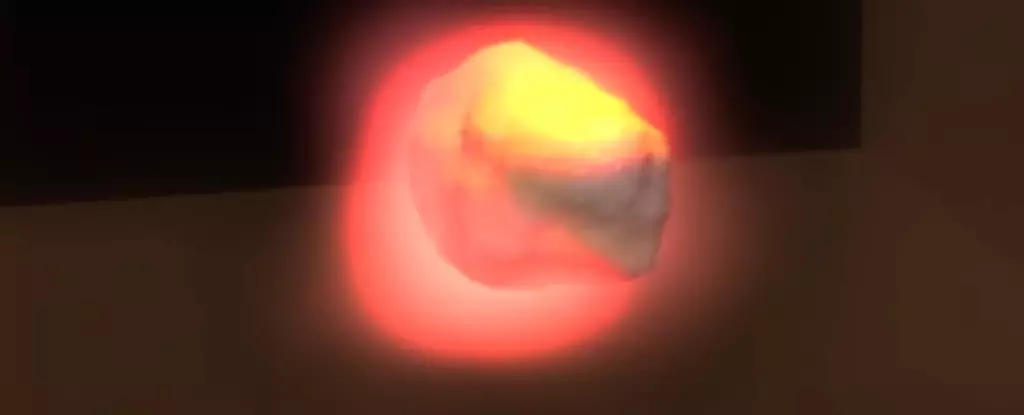As humanity continues its relentless quest for answers beyond our own planet, the remarkable revelations from NASA’s Curiosity Mars rover propel us deeper into Martian mystery. The rover recently unearthed the largest organic molecules ever detected on Mars, revealing a treasure trove of long-chain carbon compounds, potentially signaling the remnants of ancient biological activity. This discovery is monumental, not merely as a scientific curiosity, but as a powerful beacon in our ongoing search for extraterrestrial life, challenging our understanding of how life could arise and persist in the harshest of conditions.
Mars, often dubbed a barren wasteland, is gradually unveiling its secrets, and this latest find could reshape our perception of its potential for past life. The sheer scale of these organic molecules, most notably fragments reminiscent of fatty acids, raises provocative questions about the planet’s biochemical history. Fatty acids, critical in the formation of cellular membranes on Earth, hint that, under the right cosmic circumstances, life could have emerged on our neighboring planet. The implications are staggering: Mars may not have been the desolate, lifeless entity we’ve long presumed it to be.
Insights from the Gale Crater
The organic signatures discovered in a 3.7-billion-year-old rock sample, aptly named Cumberland, were meticulously analyzed by Curiosity’s Sample Analysis at Mars (Sam) instrument. This ancient rock was located in Yellowknife Bay, an intriguing site within Gale Crater that showcases features resembling terrestrial lakebeds. The geological formations suggest that once, perhaps billions of years ago, liquid water coursed through this area, providing a hospitable environment conducive to life.
The organic molecules identified include notable hydrocarbons—decane and dodecane—whose complex structures are a pioneering achievement in Martian organic chemistry. The presence of these carbon chains, despite the planet’s harsh conditions, speaks volumes about Mars’ past. It’s a thrilling time for astrobiologists; as they delve deeper into Martian geology, they find themselves increasingly optimistic that they are on the brink of profound discoveries.
The Quest for Microbial Life
Despite the euphoria surrounding this finding, one must temper excitement with scientific rigor. Although the presence of these organics is tantalizing, they do not unequivocally prove the existence of ancient life. Microscopic life forms, such as bacteria, are incredibly difficult to detect, and identifying direct biological signatures necessitates highly sophisticated tools that defy the limitations of current rover technology.
The potential for abiotic (non-life) processes to create similar hydrocarbons complicates the narrative further. While the discovery is promising, it also compels researchers to remain cautious in their interpretations. The distinctions between biology and chemistry are often blurred, and as we parse through layers of Martian history, we must prioritize rigorous validation through further research.
Looking Forward: The Mars Sample Return Mission
As the scientific community reacts to these findings, excitement is palpable surrounding the Mars Sample Return mission—a collaboration between NASA and the European Space Agency. The project aims to transport Martian samples back to Earth for more detailed analysis, a critical step that could finally provide clarity on the biological implications of these organic molecules.
The notion of bringing Martian rock and soil to Earth introduces both optimism and practical challenges. An independent review board’s critique of the increasing budget for the Mars Sample Return mission highlights the need for a pragmatic evaluation of how space exploration initiatives can be sustained amidst financial constraints. Nonetheless, the potential to use advanced terrestrial lab instruments to investigate these samples offers a glimmer of hope that we might soon unlock more secrets of our enigmatic neighbor.
Longer Carbon Chains: The Search Continues
What lies beneath the surface of Mars remains largely a mystery. The sighting of longer carbon chains and potentially even more complex organic structures is a tantalizing prospect that underscores the enduring enigma of Martian life. The possibility that samples hold keys to identifying life-like chemical signatures beckons researchers to continue their investigations with renewed fervor.
Astrobiologists, armed with the tools of modern science, are tasked with patiently unraveling the narratives captured within Martian rocks. Currently, the excitement surrounding the organic compounds discovered by Curiosity is underscored by the understanding that we have only scratched the surface of what Mars can reveal. The journey is far from over; as we continue exploring the red planet, we inch closer to potentially answering not just questions about life on Mars, but the very origins of life in the universe.

